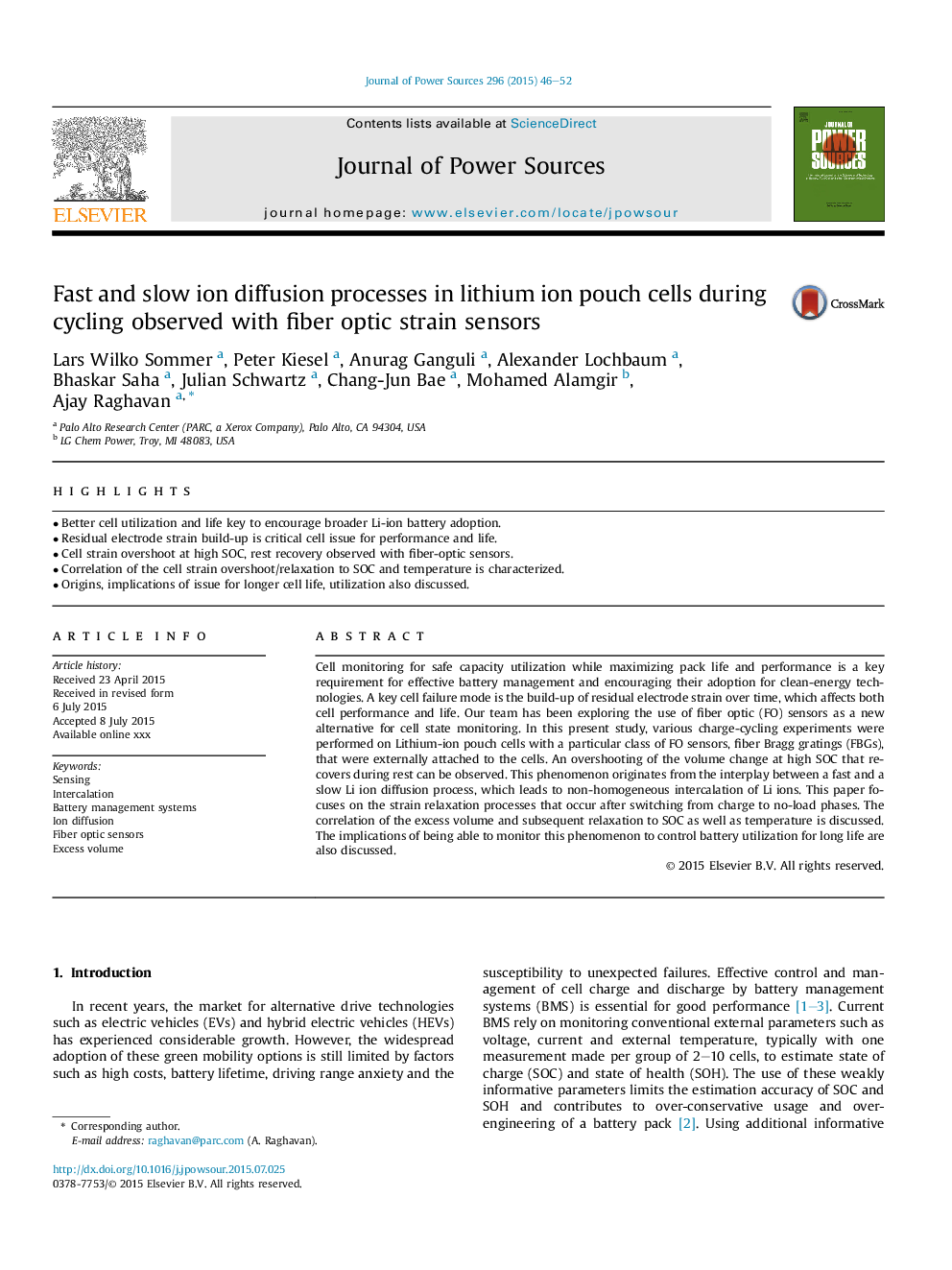| Article ID | Journal | Published Year | Pages | File Type |
|---|---|---|---|---|
| 7730523 | Journal of Power Sources | 2015 | 7 Pages |
Abstract
Cell monitoring for safe capacity utilization while maximizing pack life and performance is a key requirement for effective battery management and encouraging their adoption for clean-energy technologies. A key cell failure mode is the build-up of residual electrode strain over time, which affects both cell performance and life. Our team has been exploring the use of fiber optic (FO) sensors as a new alternative for cell state monitoring. In this present study, various charge-cycling experiments were performed on Lithium-ion pouch cells with a particular class of FO sensors, fiber Bragg gratings (FBGs), that were externally attached to the cells. An overshooting of the volume change at high SOC that recovers during rest can be observed. This phenomenon originates from the interplay between a fast and a slow Li ion diffusion process, which leads to non-homogeneous intercalation of Li ions. This paper focuses on the strain relaxation processes that occur after switching from charge to no-load phases. The correlation of the excess volume and subsequent relaxation to SOC as well as temperature is discussed. The implications of being able to monitor this phenomenon to control battery utilization for long life are also discussed.
Keywords
Related Topics
Physical Sciences and Engineering
Chemistry
Electrochemistry
Authors
Lars Wilko Sommer, Peter Kiesel, Anurag Ganguli, Alexander Lochbaum, Bhaskar Saha, Julian Schwartz, Chang-Jun Bae, Mohamed Alamgir, Ajay Raghavan,
